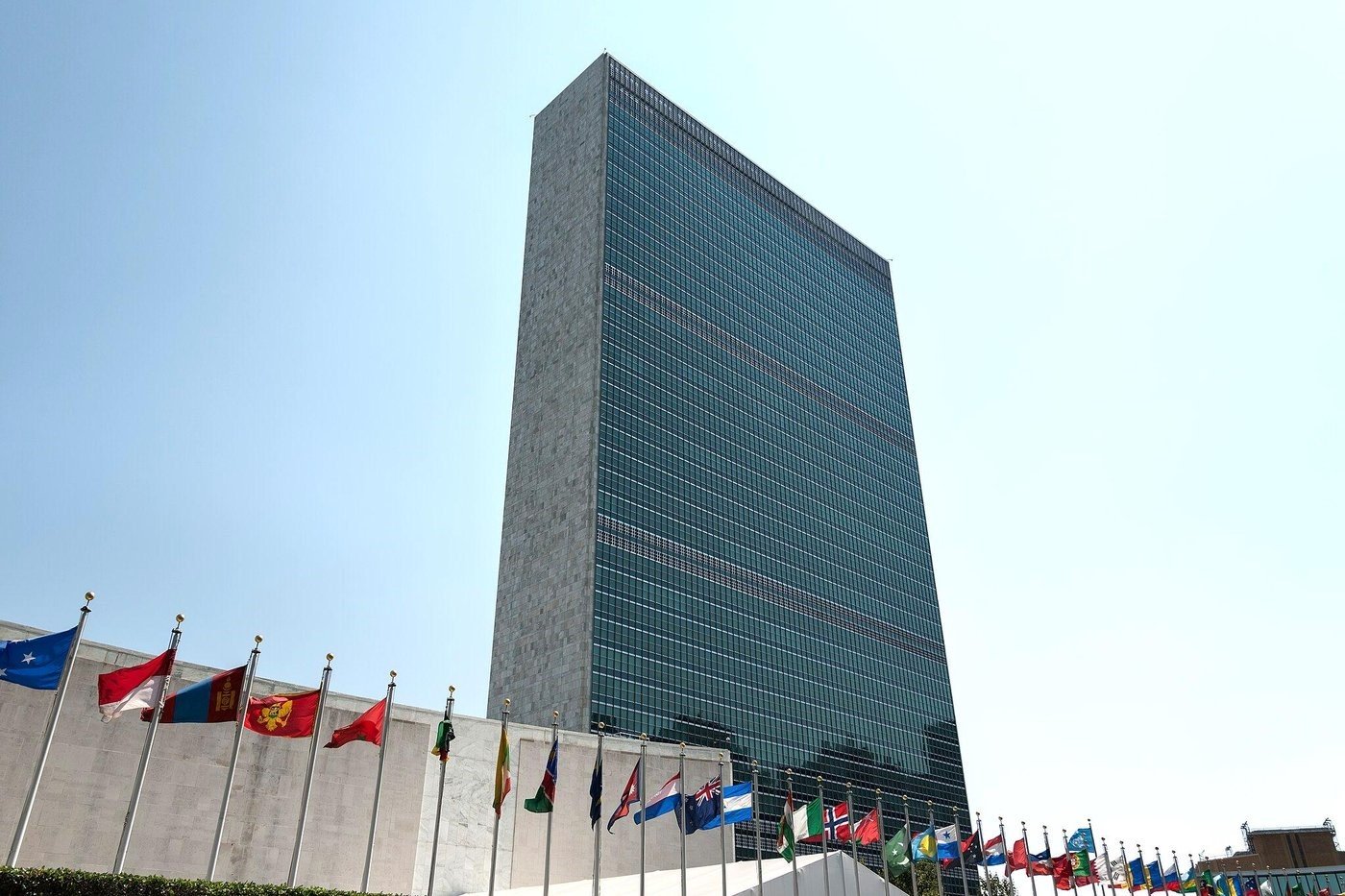EDITOR’S NOTE: THIS PIECE IS AUTHORED BY LAKSHMI PURI, UN ASSISTANT SECRETARY GENERAL AND UN WOMEN DEPUTY EXECUTIVE DIRECTOR. IT IS PART OF A SERIES EXPLORING THE SUSTAINABLE DEVELOPMENT GOALS. SEE THE INTRODUCTION TO THE SERIES HERE.
As one of my idols, Gloria Steinem, feminist, journalist, and activist, rightly said “The first problem for all of us, men and women, is not to learn, but to unlearn”. In making the world a place for gender equality and women’s empowerment, we must unlearn what the social norms are that inhibit women from thriving and reaching their maximum potential.
In September 2015, the 193 countries of the United Nations Member States adopted the landmark 2030 Agenda for Sustainable Development (2030 Agenda), which represents an unprecedented global commitment to undertake a novel journey to achieve economic, social and environmental sustainable development with a fresh approach. The 2030 Agenda encompasses 17 Sustainable Development Goals (SDGs), all of which were inclusively agreed upon and are universal, applying to both developed and developing countries, women and men, rural and urban populations and the young and old.

In the Photo: SDG8- Decent Work and Economic Growth: Globally, women work at lower rates than men and under precarious conditions. Women must have equal access to decent work, productive resources and financial services, as well as an equal voice in economic decisions. Lebanon, 2015. Photo Credit: UN Women/Joe Saad
With a truly transformative, comprehensive and universal ambition, gender equality and women’s empowerment (GEWE) is an essential and intersecting feature of the agenda. The prominence of GEWE in the 2030 Agenda is particularly embodied in a standalone goal on gender equality: Goal 5 to achieve gender equality and empower all women and girls, with six targets namely:
1. End all forms of discrimination against all women and girls;
2. Eliminate all forms of violence against all women and girls;
3. Eliminate all harmful practices such as child marriage, early and forced marriage and female genital mutilation;
4. Recognize and value unpaid care and domestic work;
5. Ensure women’s full and effective participation and equal opportunities for leadership at all levels; and
6. Ensure universal access to sexual and reproductive health.
Related Article: “Millennials and the SDGs” by Phumzile Mlambo-Ngcuka, UN Women Executive Director
Additionally, 11 out of the 17 SDGs included gender-sensitive targets which embodied a major gain for GEWE in the 2030 Agenda.
Several crucial elements for achieving GEWE are also integrated into the 2030 Agenda. The universal nature of the agenda represents a commitment to develop and implement universal policies and provide comprehensive services that are vital for addressing inequality and GEWE. With interlinkages with other SDGs, GEWE is recognized as a crucial contribution for progress across all the goals and targets of the agenda, as it is reflected as both a cross-cutting theme and a stand-alone goal which we like to call a ‘twin track’ approach. This approach was constructed based on two underlying arguments: that gender equality should be a visible priority because of the global pandemic of gender inequality and the violation of the human rights of women and girls’, and that gender equality needs to be integrated across the agenda to harness the indivisibility between gender equality and other development objectives. Thus, the 2030 Agenda is an explicit recognition that achievement of gender equality and women’s empowerment is not only as a sustainable development goal, but as “a crucial contribution to progress across all the Goals and targets” in order to realize the Agenda’s objectives of people, planet and prosperity for all.
The 2030 Agenda also adheres to the principles of leaving no one behind and reaching the furthest behind first, thus prioritizing those whose voices are least heard. Often is the case that women and girls are left behind the most, particularly when they face multiple and compounded forms of discrimination due to age, disability, refugee status, ethnical background, religion, and many other factors.
For substantive equality to be achieved, the underlying socially constructed norms about women and men’s roles that severely limit women’s opportunities and have adverse impacts on how they are perceived in society must be transformed.
In the challenge against and transformation of these norms, starting young is imperative and working at the community level has shown to create changes in attitude in behavior amongst both men and women. Quality education and the engendering of education at all levels plays a major role in the promotion of positive social norms and gender equality. Various social media platforms as well as popular media (television and radio), should also challenge sexist stereotypes about what is considered acceptable and ‘normal’ for women and men.
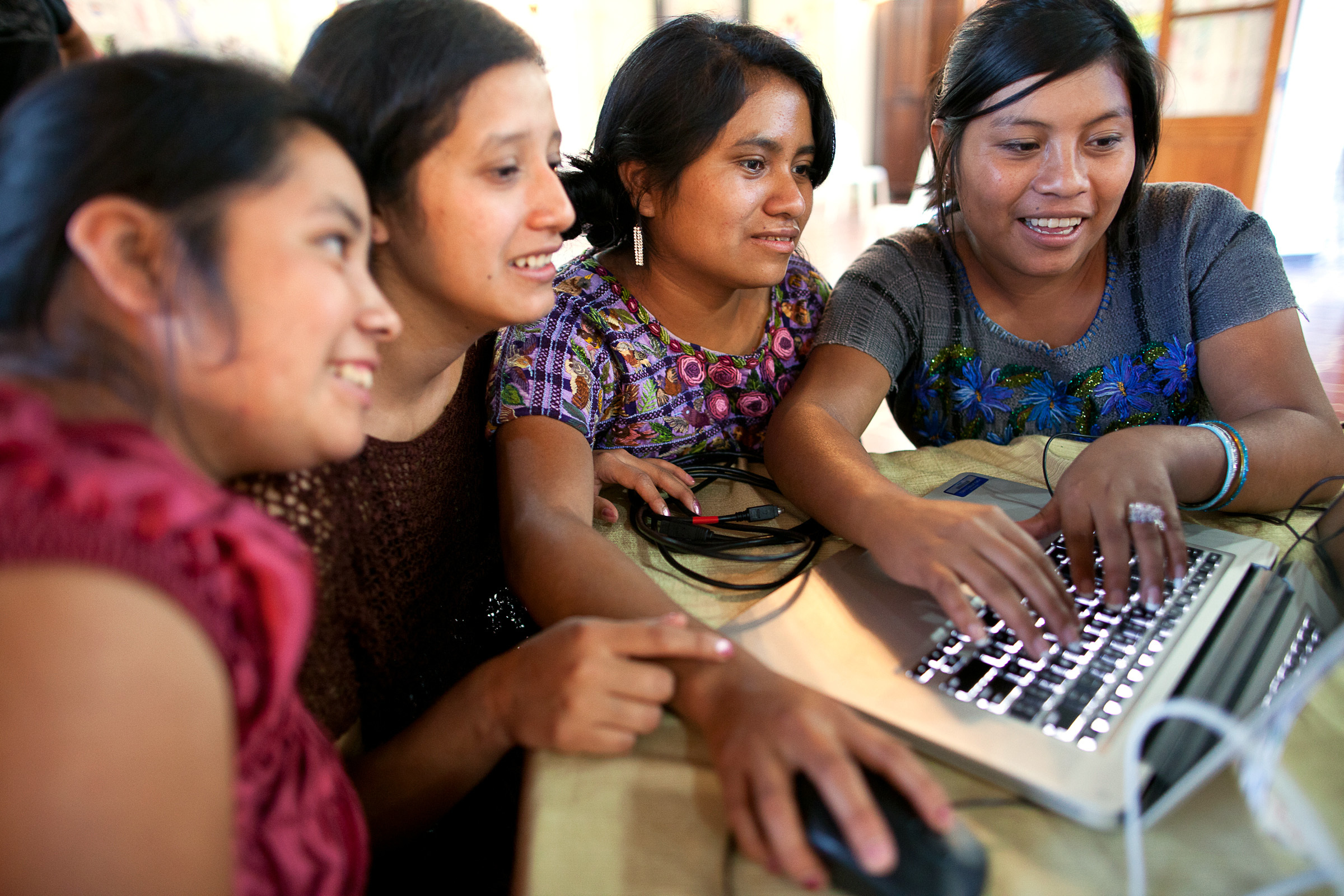
In the Photo: SDG4 – Quality Education: For education to deliver, it must be inclusive and high-quality. Active efforts to end gender stereotypes must tackle those that limit schooling or channel women and girls into ‘acceptable’ areas of study or work. Guatemala, 2011. Photo Credit: UN Trust Fund/Phil Borges
The 2030 Agenda must be implemented in a gender-responsive way for both GEWE and sustainable development to be achieved. In advancing this promise, the 60th session of the UN Commission on the Status of Women (CSW60) in March 2016, laid out the strategy and road map for gender-responsive implementation of all Sustainable Development Goals which identified 10 vectors for action – the 10 I’s – which are fundamental to accelerate the gender-responsive implementation of the 2030 Agenda. They include:
Inspiration from the intergovernmental normative frameworks and human rights conventions including the historic gender equality compact and commitments of 2015 to achieve sustainable development, human rights, peace and security, and humanitarian response and related strategies at all levels. Both governments and citizens must own the agenda, and both state action and movement building should happen simultaneously.
Implementation – localization through adoption and reform of laws, policies and measures including special measures and actions, the removal of discriminatory laws and policies, and ensuring their full, effective and accelerated implementation.
Indivisibility of the SDGs and targets – horizontal and vertical. The 2030 Agenda for Sustainable Development and all SDGs must deliver for gender equality and women’s empowerment. The prioritization of SDG 5 and gender-sensitive targets threaded across all SDGs in their implementation is a key task for all governments and will have a force multiplier effect on the achievement of all SDGs.
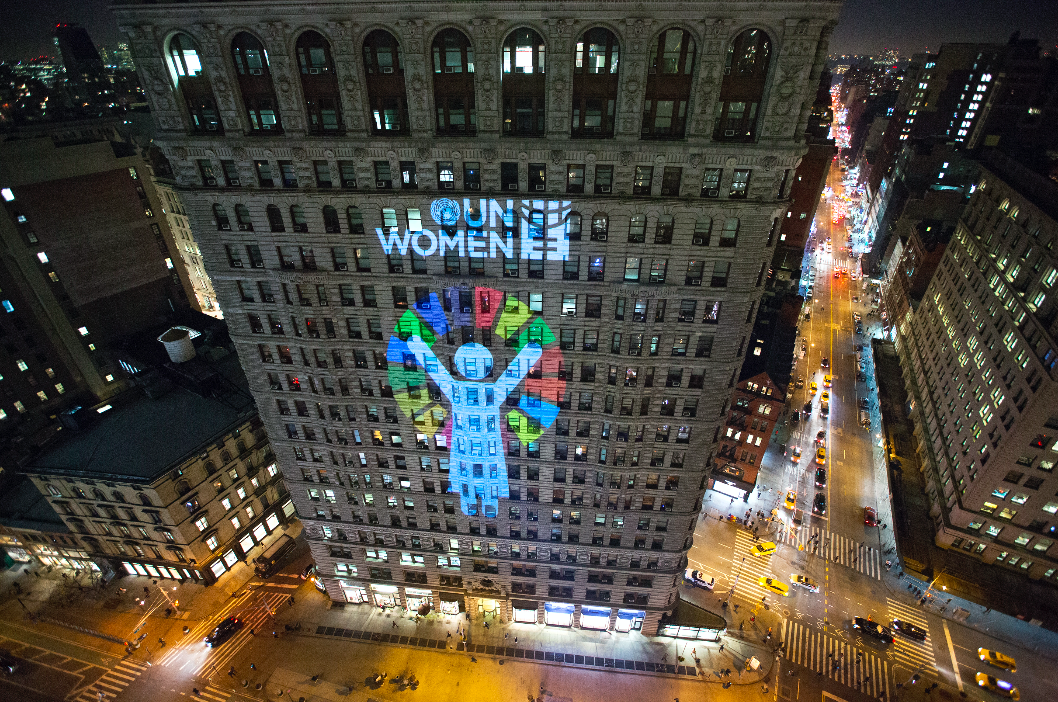
In the Photo: The Flatiron Building, a New York City landmark, is lit with UN Women’s logo and SDG woman icon in celebration of International Women’s Day 2016. The SDG woman icon expresses UN Women’s focus on meeting the Sustainable Development Goals (SDGs) and the centrality of Gender Equality and Women’s Empowerment for all of the SDGs. USA, 2016. Photo Credit: UN Women/Ryan Brown
Integration of gender equality and women’s empowerment across all SDGs and the entire 2030 Agenda, and systematic mainstreaming in the implementation of its three dimensions, including an all-of-government approach in development assistance activities and initiatives.
Inclusion of all key stakeholders, particularly civil society, women’s movements, youth, men and boys, faith-based organizations and the private sector for movement building, transforming social norms and addressing the needs of all women and girls, especially those facing multiple and intersecting forms of discrimination and marginalization. Inclusion means also that women must be equally represented in leadership positions and decision-making positions at all levels in sustainable development as men. It is impossible to make a universal vision of sustainable development become a reality, when half of humanity’s voices are being disregarded at decision-making tables. Not only must the implementation of the 2030 Agenda ensure that no woman or girl is left behind, it must mean that the poorest and most vulnerable groups of women move forward.
It is impossible to make a universal vision of sustainable development become a reality, when half of humanity’s voices are being disregarded at decision-making tables.
Institutions – creating, empowering, strengthening and resourcing gender equality and women’s empowerment institutions at all levels – global, regional, national and local – and ensuring that all key institutions – political, economic, judicial, social, cultural, public services, etc. – work in a gender-responsive manner.
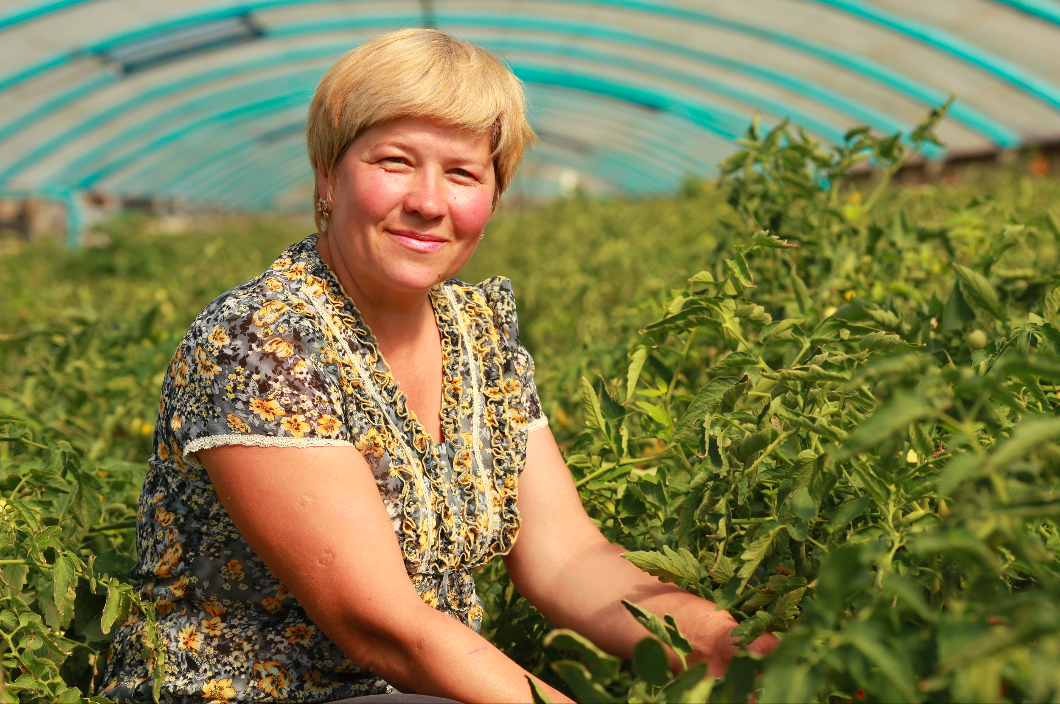
In the Photo: SDG 12 – Responsible Consumption and Production: A safe and sustainable future depends on reducing extremes in consumption and production. Women must have equal access to means such as land and technology that can boost their standard of living. Moldova, 2012. Photo Credit: UN Women/Janarbek Amankulov
Investment – significantly increased and enhanced financial investment and resource mobilization from all sources, including ODA, to close gender equality gaps at all levels – targeted and mainstreamed, transformative actions for financing gender equality and women’s empowerment as committed to in the 2030 Agenda for Sustainable Development and the Addis Ababa Action Agenda.
Finding fiscal space for social investment for achieving the SDGs and delivering for all women and girls represents a necessity that is possible to achieve. At a dire time of global recovery and slow growth, the need to create fiscal space is greater than ever before, and given that public investments are at the heart of the protection of human rights and the achievement of the SDGs, it is essential that governments explore all possible opportunities to expand fiscal space to promote national socio-economic development.
Not only must the implementation of the 2030 Agenda ensure that no woman or girl is left behind, it must mean that the poorest and most vulnerable groups of women move forward.
Information – generating comprehensive gender equality and women’s empowerment related value chain of data, statistics, indicators, monitoring systems, frameworks, and capacities in SDG implementation. Follow-up and review at all levels to assess progress and gaps as well as guide policies and actions. There are 53 indicators on gender equality and women’s empowerment in the Global Indicators Framework on SDGs which require a gender statistics revolution.

In the Photo: UN Women Executive Director Phumzile Mlambo-Ngcuka (center left, in red) and Deputy Executive Director Lakshmi Puri (center right, in yellow and blue) speak with women in the Town Hall of Shihore, a village block in the western state of Gujarat, India. An “information fair” bringing together local women and their elected leaders, was the backdrop of the event, where community members shared their experiences of using technology to catalyse change. India, 2015. Photo Credit: UN Women/Gaganjit Singh
Innovation – driving political, economic and social innovation that tackles gender equality is a priority. Through deployment of science, technology and innovation, information and communications technology (ICT), and media -including social media-, innovative partnerships and advocacy platforms, the necessary innovation can be brought forward.
Impact – these commitments must be the benchmark for accountability and must lead to actual change in the enabling environment and make a systemic and substantive impact on the situation of all women and girls, especially those most marginalized.
Recommended Reading: “ONLY A UNITED GIRLS’ RIGHTS MOVEMENT WILL DELIVER THE GLOBAL GOAL OF GENDER EQUALITY” by Anne-Birgitte Albrectsen, CEO of Plan International
The placement of gender equality as a central tenet of the 2030 Agenda is transformative and moves the mainstreaming of gender from a seemingly impossible objective of our lifetime into a “mission possible” that now has a deadline of 2030. However, getting to that deadline and reaching our objectives within the timeframe set requires great thought, planning and decisive action on all our parts. It also requires strong accountability in place. The 2030 Agenda does not specifically have an accountability mechanism, but it is based on many human rights frameworks which puts the focus on UN Member States to be guided by obligations under human rights law to be accountable for fulfilling and protecting human rights.
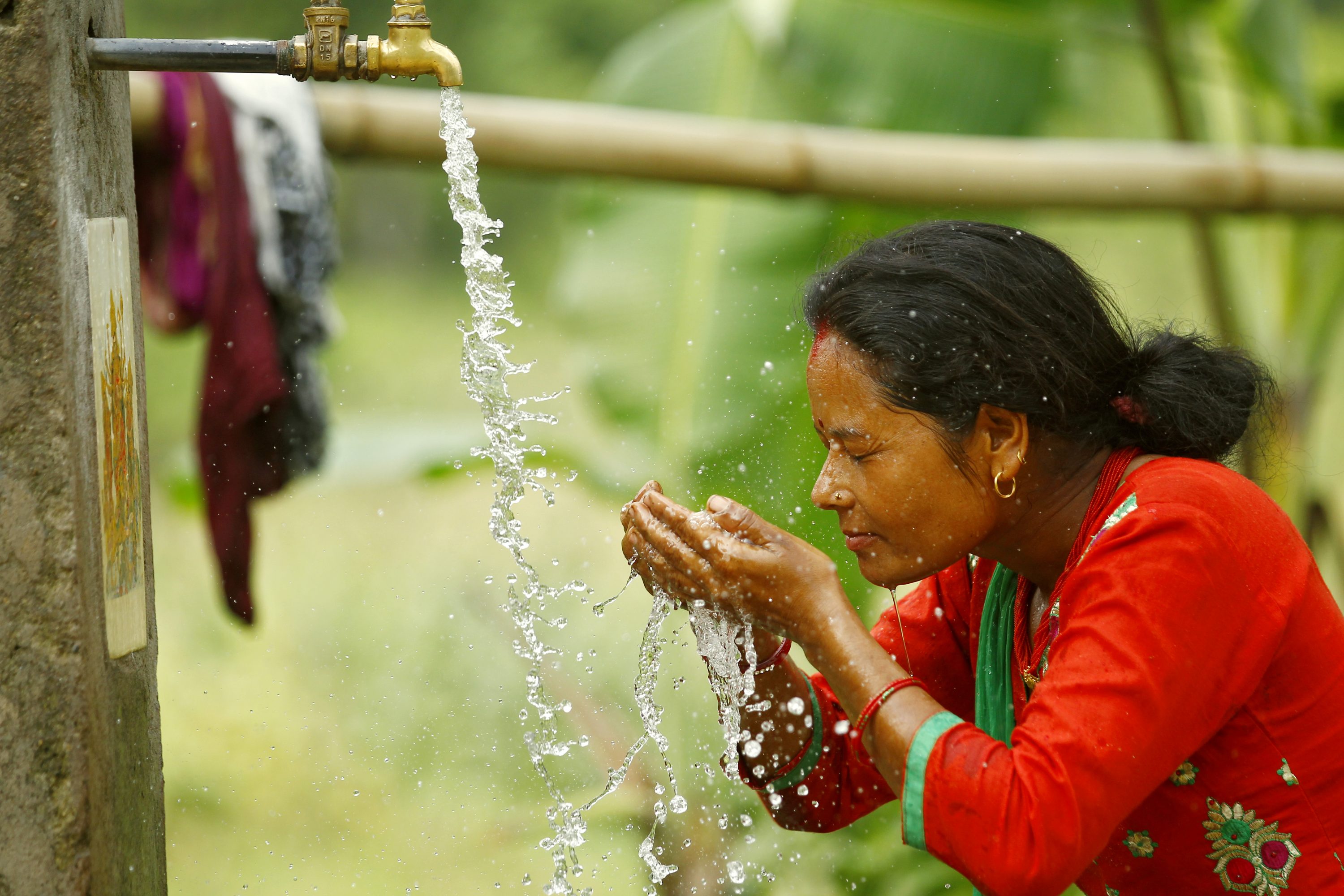
In the Photo: SDG6 – Clean Water and Sanitation: Time spent on water collection leads women and girls away from school or paid work. Lack of facilities in school means that girls drop out. SDG6 must respond to the needs of women and girls. Nepal, 2016. Photo Credit: UN Women/Narendra Shrestha
Regarding the GEWE agenda, the 2030 Agenda’s grounding in human rights links the SDGs to the implementation of the Convention on the Elimination of Discrimination against Women (CEDAW), which is indispensable for upholding international standards and norms as well as ensuring the human rights of all women and girls. Additionally, women must be given fair access to justice and means of redress if their human rights are violated. We must get to a point where there is zero tolerance for human rights violations against women and girls.
The stage has been set at the international normative level, but nonetheless, our work in achieving GEWE remains a challenge, and the way to it do it is through the gender-responsive implementation of the 2030 Agenda. Cohesion in all our efforts is indispensable. The SDGs and the entire Agenda must deliver for women and girls.
Cohesion in all our efforts is indispensable. The SDGs and the entire Agenda must deliver for women and girls.




